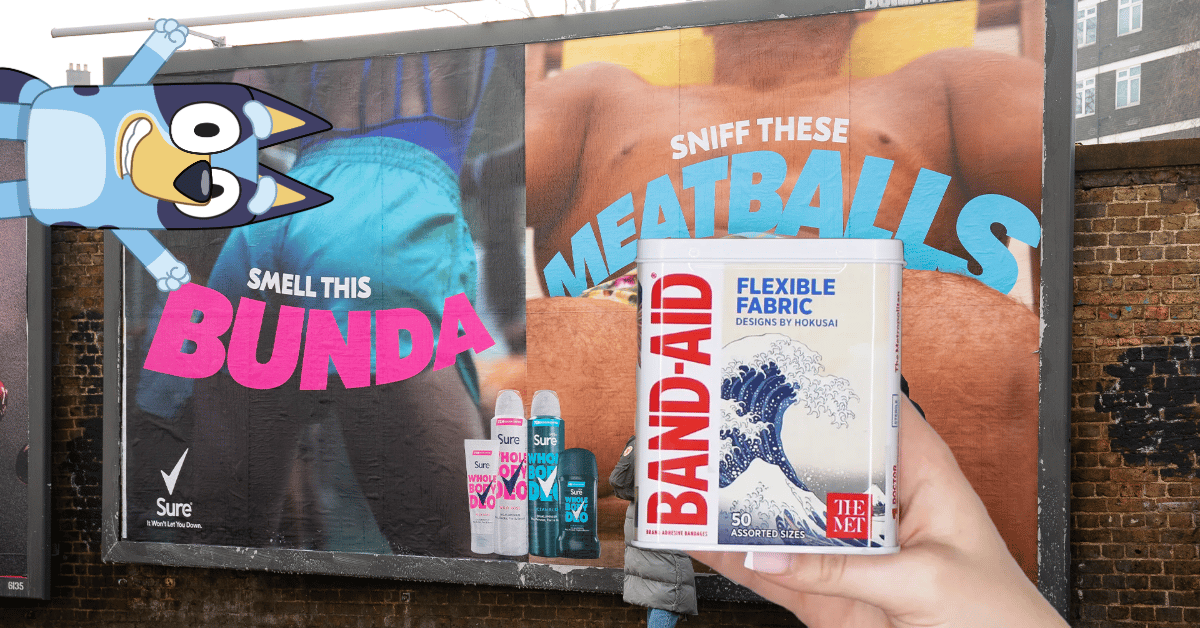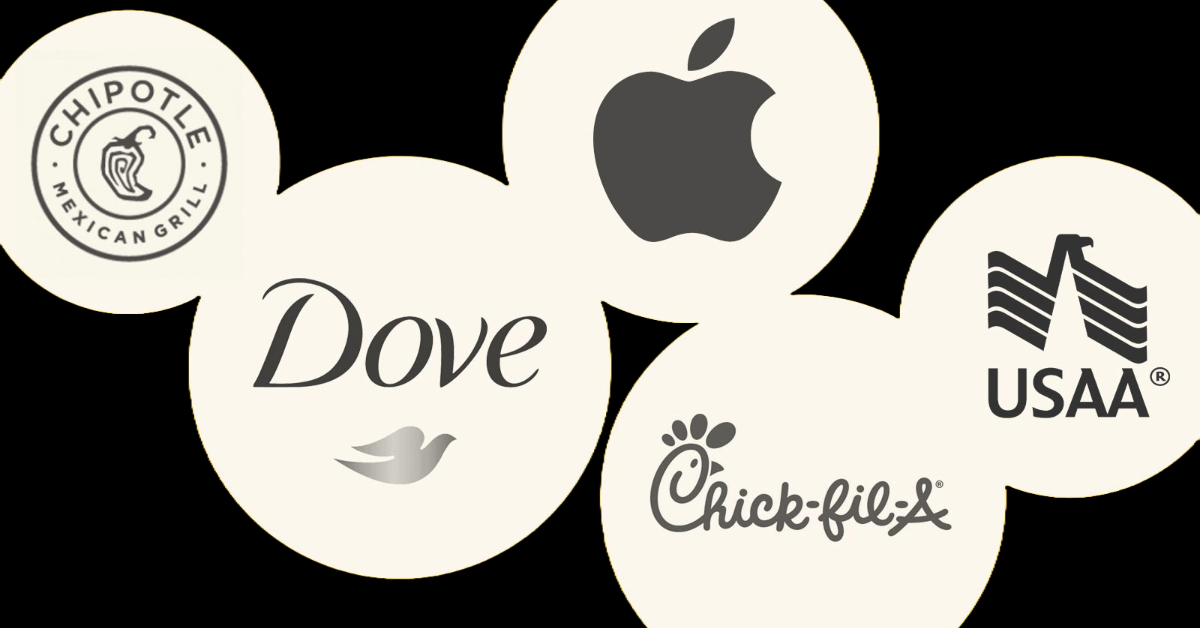- Your ATTN Please
- Posts
- Your ATTN Please || Friday, 28 March
Your ATTN Please || Friday, 28 March

Something has gone terribly, terribly wrong.
Back in January, McDonald’s created the world’s first sniffable billboards, which sent the smell of freshly cooked fries wafting into the air. Now, deodorant brand Sure has created their own scented billboards, except they smell like…um…body odour. With copy like “sniff these meatballs,” they’re sure to get attention. But also, like, ew.
- Charlotte, Editor ♡
PRESENTED BY THE ATTENTION SEEKER
Social media shouldn’t feel this hard.
Let's nail your strategy once and for all (in just 90 minutes)!
After growing our socials to 2.3M+ followers, we've created the Social Media Crash Course just for you—and this month only, we're giving it away for FREE.
Inside, you'll learn how to:
✅ Position your brand (so people actually pay attention)
✅ Create social campaigns that get engagement (not crickets)
✅ Show up on the right platforms (and ignore the rest)
✅ Turn ideas into content (without second-guessing every post)
Bite-sized lessons. Instant access. No fluff.
👇 Get access (it's free!)
WHAT’S HAPPENING IN MARKETING TODAY?
Sure’s billboards smell like BO, Bluey is overtaking Mickey & Band-Aids are now a fashion statement

Deodorant brand Sure unveils questionable “sniffable” billboards.
Yes, this headline gave me a visceral reaction. NO I do not want to ever come across these in the wild. The “cheeky” activation asks the public to “smell this bunda” and “sniff these meatballs" over various images of backsides and crotches. This campaign comes as a part of a new product launch by the brand, which is releasing a whole-body deodorant.
The product, which is first in its category in the UK, comes after Sure research found “that 67% of the UK admit to fearing B.O. as a result of sweating,” while “as many as two-thirds of Brits use an underarm deodorant on other parts of their body.” That’s great! But please give me warning before I have to see a stinky crotch while eating my morning bagel otw to work.
Bluey's set to be the next Mickey Mouse.
There are big plans for Australia’s most beloved pup. Earlier this month, YouTube awarded BBC Studios its Diamond Creator Award for getting the Bluey channel to 10 million subs. And it seems the media giant is wasting no time moving forward. “We have already commissioned seven new digital original series that will launch this year, which is 80-plus new episodes for YouTube. And we’re only just getting started,” digital SVP Jasmine Dawson told Kidscreen.
This is not to mention the Bluey Licensing Program that took hold this year. The program includes ten new and renewed partners across Canada and US, 5 UK deals, along with agents appointed for Brazil, South and Central America. It also includes a global partnership with Hasbro for co-branded Monopoly Jr. and Trouble games, along with Play-Doh. According to MarketingWeek, BBC has a long-term plan for the Bluey brand to have 100% awareness – hence the recent firepower behind the marketing as of late.
Adhesive bandages become an adult fashion accessory.
Real ones know that Nelly did it first. But coming in with a close second, Band-Aid is debuting a new collection that will feature Hokusai’s Great Wave and other artworks on their adhesive bandages. Cute!!! Target will stock the collection—which includes a first aid kit adorned with Brother Rabbit and an 1881 print by the British artist William Morris. More pieces are to come in the following months.
The new line marks a trend that’s been underway for a couple of years now: the bandage’s transition from practical first-aid remedy to fashion accessory. “Originally, bandages were kind of seen as, ‘Let’s blend it in and cover it up,’” Steven Maseda told ADWEEK. “But they’re becoming a little bit of a self-expression tool as well.”
The brand has multiple whimsical offerings: your standard unicorns, dinosaurs, Gummy Bears, and the like. But also, more eccentric offerings like tennis balls, bacon strips and pickles. For patients with chronic health issues that require regular injections, fun bandages can make a harrowing condition a little less, well, harrowing, giving a sense of agency. All in all, It’s a yes from me, dawg.
-Sophie, Writer
DEEP DIVE
Is "purpose-driven" marketing a lie?

Once upon a time, brands were just brands.
They sold us things, we bought them, and that was that. Then came the age of "purpose-driven marketing"—the promise that brands could be more than just peddlers of products. They could be moral leaders, cultural tastemakers, even agents of change.
And for a while, it seemed almost believable. Corporations plastered rainbow logos on everything during Pride Month, declared their commitment to sustainability, and ran ads urging people to vote. Marketing wasn’t just about making money—it was about making a difference. Or so we were told.
The problem is that "brand purpose" has always had a fundamental contradiction at its core: it still serves a profit motive.
That’s why the same corporations that promise to "empower women" also push impossible beauty standards. Why fast fashion brands can launch "eco-friendly collections" while dumping tons of textile waste into landfills. Why tech companies pledge to "connect the world" while hoarding our data like digital overlords.
At best, "purpose-driven marketing" is well-intentioned hypocrisy. At worst, it’s a cynical ploy that numbs us to the creeping influence of corporate power.
The decline of institutional trust left a vacuum. And of course, brands eagerly stepped in.
As governments struggled to keep up with social issues, brands presented themselves as the new ethical authorities. Need political guidance? Here’s an ad campaign. Want to fight climate change? Buy this reusable cup. Want to stand for democracy? Use our hashtag.
Slowly but surely, corporate influence blurred into spaces that should have been left to democratic institutions. It trained us to look to brands—not elected leaders—for moral direction. It made activism feel like a shopping decision. And it positioned profit-seeking companies as the gatekeepers of social change.
Whether intentional or not, this shift helped pave the way for a world where corporate interests dictate cultural narratives, control public discourse, and monitor our lives through algorithmic surveillance.
So, where does that leave us marketers?
Marketers exist in this messy intersection of profit and influence. We craft the messages, build the narratives, and decide which "values" get monetised. And that comes with responsibility. Can marketing ever be truly ethical when it’s tied to a business agenda?
Can brands be a "force for good" when their existence depends on consumption? Or is all of this just a more palatable way to sell the same system, wrapped in a prettier, more "purposeful" package? That’s the real question.
-Sophie, Writer
TREND PLUG
“I thought I was gonna have a grand mal seizure!”

Whether you're surviving a stay at White Lotus or just surviving the day, sometimes you just gotta (pompously) laugh away the stress.
In season 3 of The White Lotus, main character Victoria Ratliff (played by Parker Posey) breathes a sigh of relief after an intense moment. Then, she drops a fantastically odd line in front of her family: "Well that was stressful!" she laughs rich person-ly, "I thought I was gonna have a grand mal seizure!"
Creators have quickly hopped on this sound, using it to describe (mostly non-life threatening) situations that they came away from unscathed, like when:
How you can jump on this trend:
Grab this sound, put the camera on yourself and lipsync Victoria's parts. Add some OST describing a situation you really didn't wanna be a part of, but you nonetheless survived. Bonus points if you can pull some snooty facial expressions that scream, "I've never been inside a grocery store".
A few ideas to get you started:
When the meeting host tells you "we won't need the full hour"
Thinking you're about to lose a valuable client, only for them to sign a 12-month contract
When you haven't heard from your work bestie who's been sick for days, then she suddenly shows up alive
-Devin, Copywriter
FOR THE GROUP CHAT
😲WTF: America is NOT REAL
❤How wholesome: The perfect song doesn’t exi-
😊Soooo satisfying: new crocs just dropped
🍝What you should make for dinner tonight: Melting Sweet Potatoes!
TODAY ON THE YAP PODCAST
Want even more “YAP”ing? Check out the full podcast here.
ASK THE EDITOR

I have an association that helps people make a smooth transition between school and work. How do we differentiate ourselves and capture the right audience? -Martina
Hey Martina!
Ok, this is almost two questions in one! So first, the way you set yourself apart is by telling a good story that taps into a universal human truth. You're lucky because the transition between school and work is something almost everyone has experienced (or will soon). If your content tells that story in a way your audience can relate to, they will learn to love your brand. And that is the reason they will engage with you and your services.
When it comes to capturing the right audience, this is actually a myth. Sure, you can target the people who are most likely to be interested, but there is no guarantee your content will only reach them. Instead, you should create content that is broadly relatable, because the more people who see your brand, the more the right people will see it.
- Charlotte, Editor ♡
Not going viral yet?
We get it. Creating content that does numbers is harder than it looks. But doing those big numbers is the fastest way to grow your brand. So if you’re tired of throwing sh*t at the wall and seeing what sticks, you’re in luck. Because making our clients go viral is kinda what we do every single day.
WHAT DO YA THINK?
How did you like YAP today? |

Reply